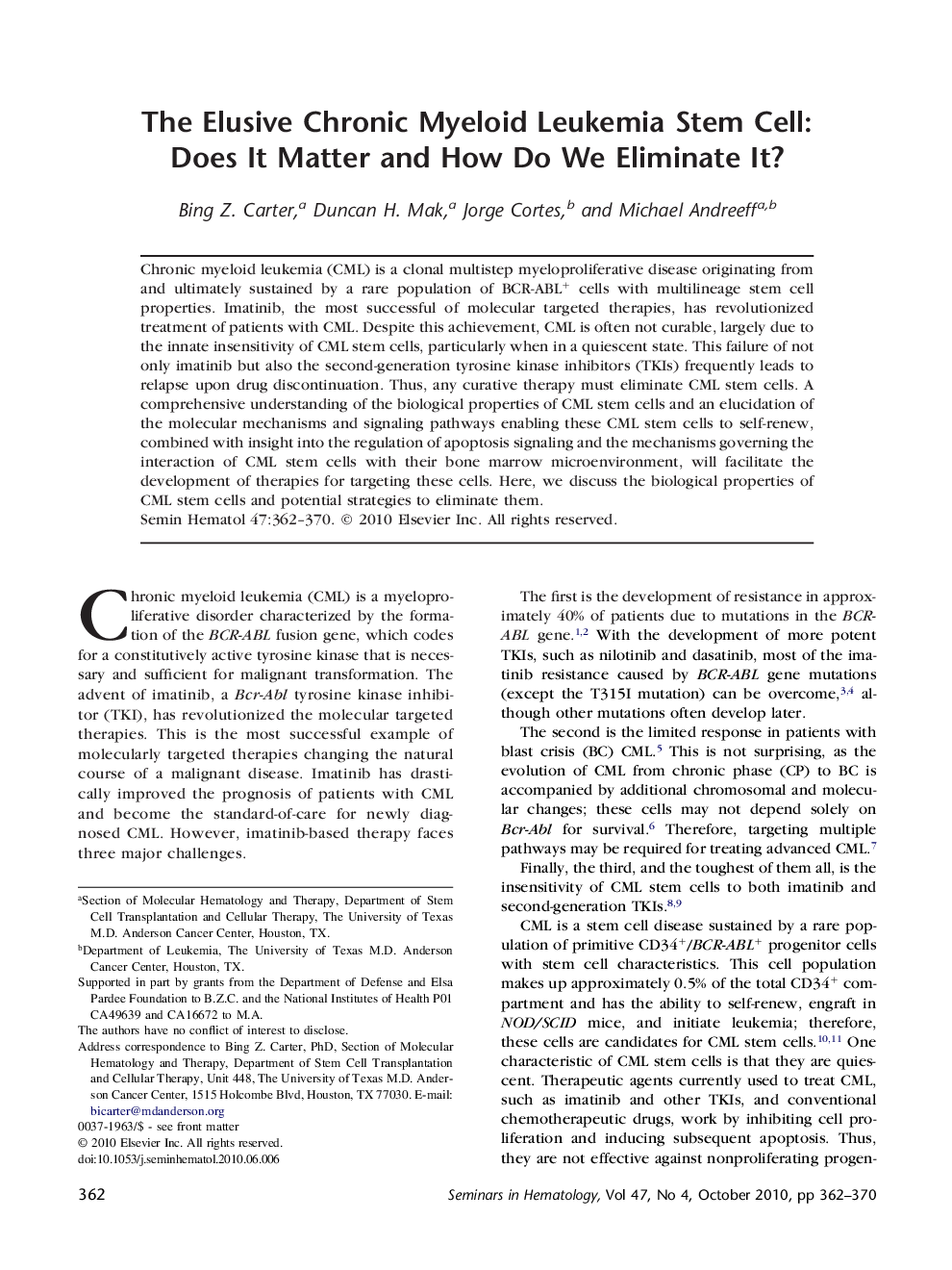| Article ID | Journal | Published Year | Pages | File Type |
|---|---|---|---|---|
| 3333710 | Seminars in Hematology | 2010 | 9 Pages |
Abstract
Chronic myeloid leukemia (CML) is a clonal multistep myeloproliferative disease originating from and ultimately sustained by a rare population of BCR-ABL+ cells with multilineage stem cell properties. Imatinib, the most successful of molecular targeted therapies, has revolutionized treatment of patients with CML. Despite this achievement, CML is often not curable, largely due to the innate insensitivity of CML stem cells, particularly when in a quiescent state. This failure of not only imatinib but also the second-generation tyrosine kinase inhibitors (TKIs) frequently leads to relapse upon drug discontinuation. Thus, any curative therapy must eliminate CML stem cells. A comprehensive understanding of the biological properties of CML stem cells and an elucidation of the molecular mechanisms and signaling pathways enabling these CML stem cells to self-renew, combined with insight into the regulation of apoptosis signaling and the mechanisms governing the interaction of CML stem cells with their bone marrow microenvironment, will facilitate the development of therapies for targeting these cells. Here, we discuss the biological properties of CML stem cells and potential strategies to eliminate them.
Related Topics
Health Sciences
Medicine and Dentistry
Hematology
Authors
Bing Z. Carter, Duncan H. Mak, Jorge Cortes, Michael Andreeff,
